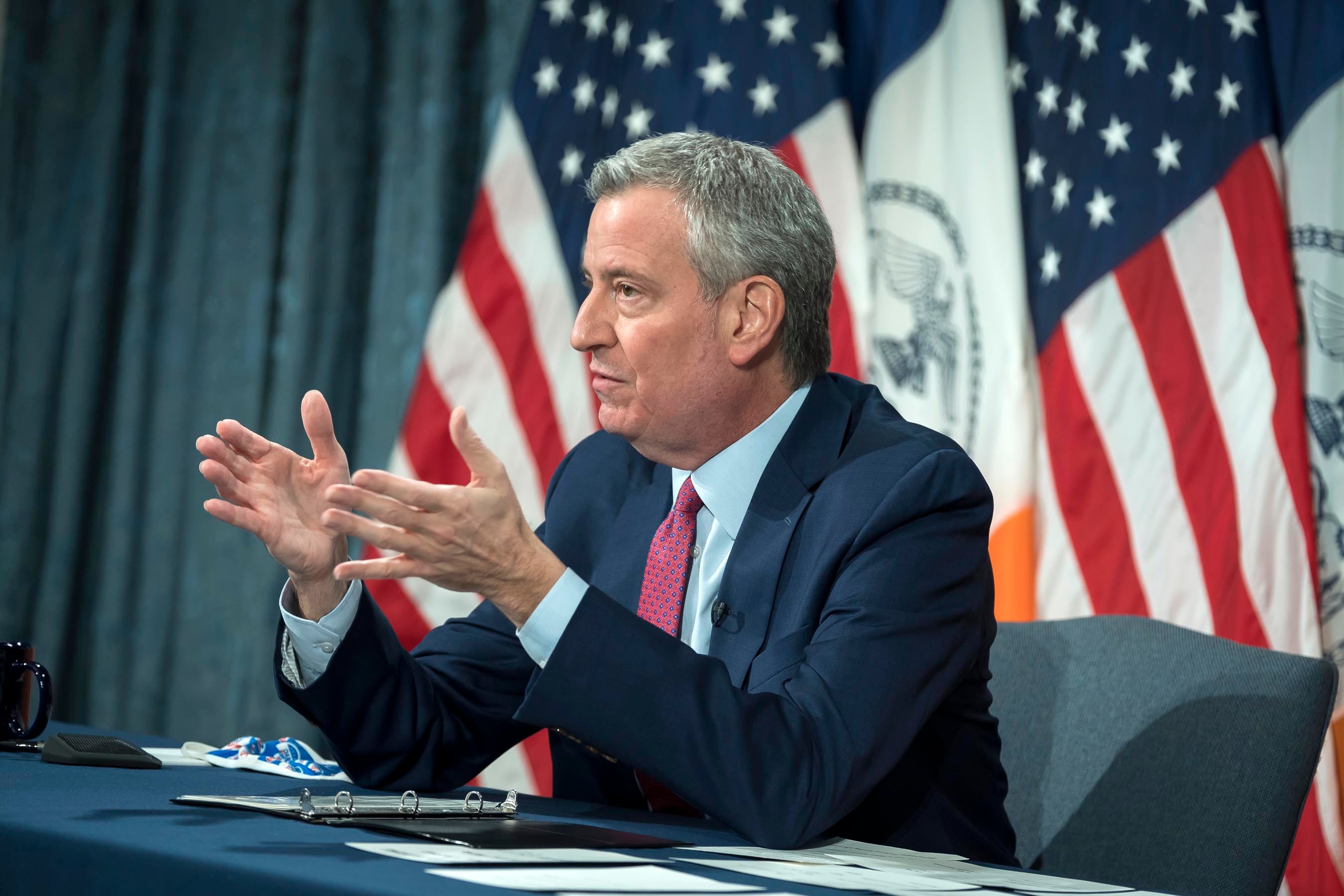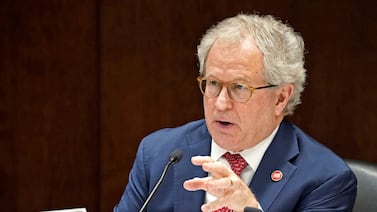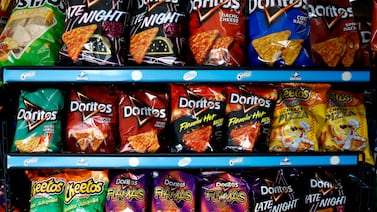Mayor Bill de Blasio will prioritize fully reopening New York City public schools this fall, according to a proposed budget for the next fiscal year.
In unveiling his preliminary $92.3 billion budget Thursday, de Blasio also said he wants to close the “COVID achievement gap,” following the pandemic-fueled disruption to in-person school.
“Our schools have to come back in September, fully,” de Blasio told reporters. “That means kids coming back to the classrooms five days a week. It also means addressing their academic needs, their emotional needs, which are so intense right now.”
But that will take money, and nearly a year into the coronavirus crisis, the city’s financial picture remains grim. De Blasio said the city is expecting a $5 billion budget gap next fiscal year alone, due to pandemic-related revenue shortfalls and emergency spending. The city has said it plans to close the gap through hiring freezes, “labor savings,” and additional cuts.
He said the school reopening effort would hinge largely on additional federal coronavirus relief dollars, approved last month, which the state would need to allocate to the city.
Under this year’s budget draft, the education department would receive $28.7 billion — about the same it’s expected to spend this year — with more than $60 million in cuts that would affect certain services for students. For the current fiscal year, the city cut just over $700 million from New York City schools, as it had anticipated a $9 billion deficit. But a portion of those millions in education cuts were restored after the current budget passed last July. Big cuts to school funding and a planned expansion of its 3K preschool program for next fiscal year were averted at the last minute, de Blasio said, because of the incoming Biden administration’s promise to reimburse New York City for $1 billion in coronavirus-related costs.
Thursday’s budget draft is the first of two proposals from the mayor, followed by negotiations with the City Council, which is charged with approving a final budget plan by the start of the new fiscal year on July 1.
Here are some of the highlights from de Blasio’s draft budget.
Reopening schools full-time
De Blasio said that his goal would be to reopen schools full-time by September. Officials did not detail the specific costs associated with this effort.
Even though teachers have begun to receive coronavirus vaccines, public health professionals have warned that there are still questions about when buildings can fully reopen safely. Many of those experts agree that mask-wearing, hand-washing, and good ventilation will still be necessary for the foreseeable future.
The estimated $2 billion that New York City schools are supposed to receive in federal coronavirus relief dollars will be key to covering the costs of reopening buildings, de Blasio said.
The state is charged with distributing that federal money to school districts. However, de Blasio worried that lawmakers in Albany wouldn’t allocate enough to New York City schools. He feared cuts to state dollars for New York City while filling that gap with federal dollars. The state did just that for the current budget, effectively canceling out the first round of coronavirus relief. That left New York City and other districts with higher shares of low-income families to carry a larger burden of the cuts, two studies found.
Gov. Andrew Cuomo has not yet released his state budget proposal, which is due by Jan. 19, but the city’s budget draft projects that schools will receive a $1.4 billion increase from Albany. Even though more federal stimulus dollars are coming through, Cuomo has warned that additional money, such as tax increases, will be needed to fill the state’s anticipated $15 billion budget gap.
“If we don’t have the money, we continue to have huge challenges in terms of opening up school in September,” de Blasio said. “There’s gonna be a huge cost to reopen school, to address that COVID achievement gap, to provide support to kids who have been through trauma.”
Helping kids catch up
De Blasio said part of his investment in schools will be to help students catch up after a mass disruption to in-person school. Most children in New York City are learning remotely full-time, but the city has largely focused on reopening buildings.
The mayor vowed to close the “COVID achievement gap,” but city officials have not detailed specifically what this refers to or how much it would cost. Last month, the city revealed several ideas to meet student needs during the 2021-22 school year: assessing children to see what they know; devising tailored digital lessons; and providing training for teachers and parents. City officials have not offered any more specifics, except that they would start implementing the plan this school year.
Additionally, de Blasio’s plan earmarks a new $35 million for “resources to support social-emotional learning for students impacted by COVID.” Ahead of this school year, the mayor and schools Chancellor Richard Carranza announced a trauma-informed curriculum and training for teachers funded through private donations.
Some new investments mixed with cuts
De Blasio was set to announce $150 million in cuts to Fair Student Funding, which is money that flows directly to schools, and $44 million in reductions, which would delay a planned expansion of 3K preschool programs. But in a last-minute reversal, those cuts were shelved after de Blasio spoke via phone with New York Sen. Chuck Schumer, a Democrat, who informed the mayor on Thursday that the city would be reimbursed $1 billion in federal emergency relief for coronavirus-related expenses.
Under the mayor’s preliminary proposal, there will be some cuts to school services. For the second consecutive year, de Blasio is proposing $40 million in cuts to school allocation memos, which pay for a range of school-level services, including social workers, restorative justice programs, and support for students with disabilities and for English language learners. It was not immediately clear how those reductions would be distributed.
Overtime pay for teachers — known as per-session pay — would be cut by $21 million next fiscal year, the proposal shows. That could mean fewer after-school activities or extra support for teachers who staff those programs. Additionally, city agencies will only be allowed to fill a vacancy if three other jobs are vacant.
Starting in the current fiscal year and going through the next one, the mayor has proposed spending $17 million to equip shelters with WiFi after advocates reported many homeless students were unable to log on for remote learning. The mayor has also proposed funding 70,000 slots for the city’s Summer Youth Employment Program, following a significantly pared-down program last summer. That is about 4,500 fewer slots than were offered in 2019, before the pandemic.
De Blasio said the city is still searching for labor savings after delaying certain costs — including back wages for teachers — to the next fiscal year. Last year, the mayor promised the teachers union that it would extend a layoff moratorium through the next fiscal year so long as the city receives more federal aid. Officials did not immediately confirm whether this moratorium still applies. De Blasio said layoffs would be a “last resort” next fiscal year.
The mayor’s updated budget proposal is expected in the spring.





